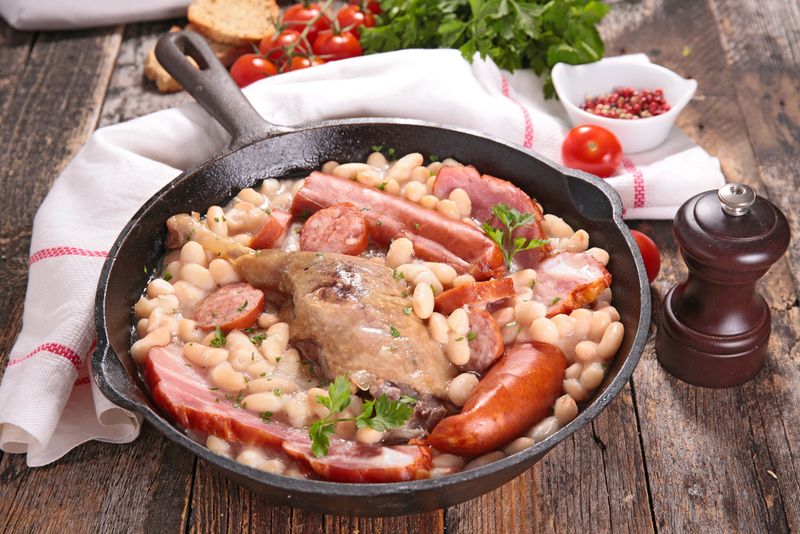Perhaps no dish in Southwest France is more famous, beloved, or contentious than cassoulet. The name Cassoulet derives from the term 'cassole,' which refers to the conical clay vessel in which it is traditionally prepared. The dish was initially considered peasant food — a basic assemblage of materials accessible at the time: white beans with sausage, duck confit, pork, and gizzards cooked together for an extended period.
Continue reading to discover more about this legendary dish's origins and components.

The Meat
Cassoulet is cooked differently in various parts of France. In Castelnaudary they use duck confit, pig shoulder, and sausage; in Carcassonne, it's made with mutton; the Toulouse version contains duck confit, Toulouse sausage, and a bed of breadcrumbs over top. Also in Auch, goose or duck meat is used, and no crumbs are added; rather, they continually shatter the crust to create a crispy coating.
The Beans
Beans are an integral part of Cassoulet. According to legend, Columbus introduced the white bean to Europe from the Americas. Following that, Catherine de Medici, France's queen, sponsored the introduction of the white bean, which began to be widely planted across Southwest France. Even the sort of bean is debatable. Coco or Tarbais bean is preferred which is a huge and slightly flat white bean that grows at the foot of the Pyrénées Mountains in the southern regions. However, everyone believes that the tastiest cassoulet of the season is cooked using freshly gathered fava beans in the spring.
The Originators
The city of Castelnaudary claims ownership of the original cassoulet, which was besieged by the British during the Hundred Years War. The besieged townsfolk collected all available supplies and prepared a big stew to feed and strengthen their defenders. The lunch was so filling and strengthening that the troops easily repelled the attackers and prevented the city from being occupied. However, the origins of cassoulet are more likely to be the consequence of worldwide contacts than the Castelnaudary mythology implies.
The preparation
Originally, cassoulet was prepared using the residual heat in the hearth or a bread baker's oven. Low heat enabled the beans to break down and absorb all of the meat's flavor and fat. This can be duplicated in a contemporary kitchen in a matter of hours.